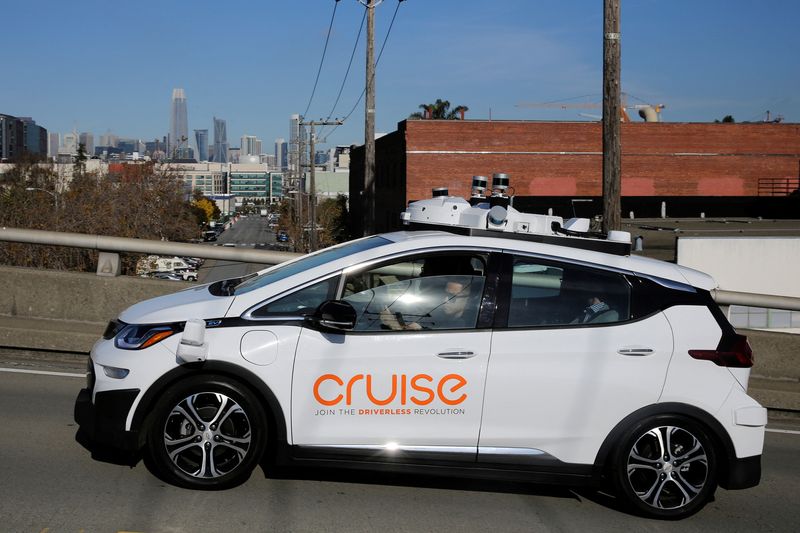(Reuters) - U.S. robotaxi operators could face increased regulatory scrutiny after an accident involving Cruise, the self-driving cab business of General Motors (NYSE:GM), forced the company to pause service.
In October, one of Cruise's driverless cabs was not able to stop in time from hitting a pedestrian who had been struck by a hit-and-run driver, raising safety concerns around the use of robotaxis.
Here's a quick rundown on the sector:
What are robotaxis?
Robotaxis are autonomous self-driving cabs which require no human interaction to operate the vehicle. The ride-hailing service can be availed through mobile apps.
How does it work?
The vehicles use machine-learning models and advanced systems to process information from technologies such as cameras and LiDAR sensors, as well as pre-existing data, to navigate around specified areas without a human driver required to make decisions.
When did driverless cabs become a reality?
Alphabet (NASDAQ:GOOGL)'s Waymo was the first to kick off robotaxis in the United States in 2017.
Cruise followed with its first driverless ride service last year in San Francisco, and slowly expanded to include Phoenix, Arizona, and Austin, Texas.
Companies offering the service
Robotaxi services are currently offered in specific areas within the United States by Waymo, Uber Technologies (NYSE:UBER) and Lyft (NASDAQ:LYFT).
While Cruise paused its U.S. services for a safety review, it continues to undertake testing in closed course training environments, along with public testing overseas.
Amazon.com (NASDAQ:AMZN) is also testing its robotaxi service, Zoox, to handle traffic lights, intersections and drive at speeds of up to 35 miles per hour.
When will robotaxis become mainstream?
While robotaxis offer the convenience of lower operating costs for cab operators, there are regulatory approvals and technological hurdles that need to be overcome before the cabs are widely adopted across states.
Lucid (NASDAQ:LCID)'s CEO in 2021 said it was likely to take a decade before self-driving taxis would be deployed on roads, and they weren't "coming anytime soon even with the most advanced sensing systems in the world".
The use of driverless cabs also raises the prospect of job losses and could attract pushback from unions.
Are robotaxis safer than other cars?
On paper, robotaxis are supposed to offer better safety due to their advanced machine-learning models and a host of sensors designed to monitor traffic activity.
Newer models of the vehicles were also tuned to offer smoother braking and acceleration curves to give passengers a better ride.
However, the unpredictability of human drivers and pedestrians sometimes makes it difficult for the current autonomous driving tech to take quick decisions and navigate around hazards.
Regulatory hurdles facing robotaxis
Commercializing fully autonomous vehicles, especially robotaxis, has been harder than expected with tough regulations, complicated technology and heavy investments forcing some to cut jobs.
Some companies such as Ford (NYSE:F) and Volkswagen-backed Argo AI have also shut shop.
